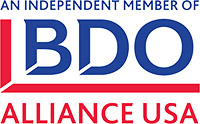
In today’s digital age, the use of paper has become increasingly obsolete. With the rise of paperless technology, businesses and individuals are shifting towards a more environmentally friendly and efficient way of managing documents and workflows.
In this article, we will explore the benefits of going paperless and how technology is making it easier than ever to transition to a paperless environment.
Why Go Paperless?
Environmental Impact

The most obvious reason to go paperless is the positive impact it has on the environment. According to the Environmental Protection Agency, the average office worker uses 10,000 sheets of paper per year. This not only contributes to deforestation but also leads to the emission of harmful greenhouse gases during the paper production process.
By going paperless, businesses and individuals can significantly reduce their carbon footprint and help preserve the environment for future generations.
Cost Savings
In addition to the environmental benefits, going paperless can also lead to significant cost savings. The cost of paper, ink, and printing supplies can add up quickly, especially for businesses that rely heavily on paper-based processes. By eliminating the need for paper, businesses can save money on supplies and storage space for physical documents.
Increased Efficiency

Paper-based processes can be time-consuming and prone to errors. With paperless technology, documents can be easily stored, accessed, and shared digitally, eliminating the need for manual tasks such as printing, scanning, and filing. This not only saves time but also reduces the risk of human error.
How Technology is Making Paperless Possible
Electronic Documents
The first step towards a paperless environment is the transition from physical to electronic documents. With the use of scanners and document management software, physical documents can be converted into digital files and stored in a centralized location. This not only saves physical storage space but also makes it easier to access and share documents.
Digital Signatures

One of the biggest barriers to going paperless is the need for physical signatures on important documents. However, with the rise of digital signature technology, this is no longer an issue. Digital signatures are legally binding and can be easily added to electronic documents, eliminating the need for printing and signing physical copies.
Cloud Storage
Cloud storage has revolutionized the way we store and access documents. With the use of cloud-based document management systems, documents can be securely stored and accessed from anywhere with an internet connection. This not only eliminates the need for physical storage space but also makes it easier to collaborate and share documents with others.
Mobile Applications

by abillion
With the increasing use of smartphones and tablets, mobile applications have become an essential tool for businesses and individuals. Many document management systems now offer mobile apps, allowing users to access and manage documents on the go. This is especially useful for businesses with remote or traveling employees.
Automation
Automation is another key aspect of paperless technology. With the use of workflow automation software, businesses can streamline their processes and reduce the need for manual tasks. This not only saves time but also reduces the risk of errors and improves overall efficiency.
How to Transition to a Paperless Environment
Assess Your Current Processes
The first step towards going paperless is to assess your current processes and identify areas where paper can be eliminated. This could include digitizing physical documents, implementing electronic signatures, or automating manual tasks.
Choose the Right Technology

There are many paperless technology options available, so it’s important to choose the right one for your specific needs. Consider factors such as cost, features, and compatibility with your current systems when making your decision.
Train Your Team
Transitioning to a paperless environment requires a change in mindset and processes. It’s important to train your team on the new technology and processes to ensure a smooth transition. This could include providing tutorials, hosting training sessions, or assigning a team member as the go-to person for any questions or issues.
Start Small
Going completely paperless overnight may not be feasible for every business. Instead, start small by implementing paperless processes in one department or for specific tasks. This will allow you to work out any kinks and make adjustments before fully transitioning to a paperless environment.
Real-World Examples of Paperless Technology in Action
DocuSign
DocuSign is a popular digital signature platform that allows users to securely sign and send documents electronically. This technology has been widely adopted by businesses of all sizes, making it easier to go paperless and streamline document signing processes.
Google Drive

by Elle Cartier
Google Drive is a cloud-based storage and collaboration platform that allows users to store, access, and share documents from anywhere with an internet connection. With its user-friendly interface and integration with other Google products, Google Drive has become a popular choice for businesses looking to go paperless.
Adobe Acrobat
Adobe Acrobat is a document management software that allows users to create, edit, and share PDF documents. With its advanced features such as electronic signatures and document security, Adobe Acrobat has become a go-to tool for businesses looking to transition to a paperless environment.
The Future of Paperless Technology
As technology continues to advance, the possibilities for a paperless future are endless. With the rise of artificial intelligence and machine learning, we can expect to see even more automation and efficiency in paperless processes.
Additionally, the use of blockchain technology is gaining traction in the document management space, providing an even more secure and tamper-proof way of storing and sharing documents.
Takeaways
Going paperless not only benefits the environment but also leads to cost savings and increased efficiency. With the help of paperless technology, businesses and individuals can easily transition to a paperless environment and reap the benefits of a more streamlined and eco-friendly way of managing documents and workflows.
By assessing current processes, choosing the right technology, and training your team, you can successfully make the shift to a paperless environment and contribute to a more sustainable future.




